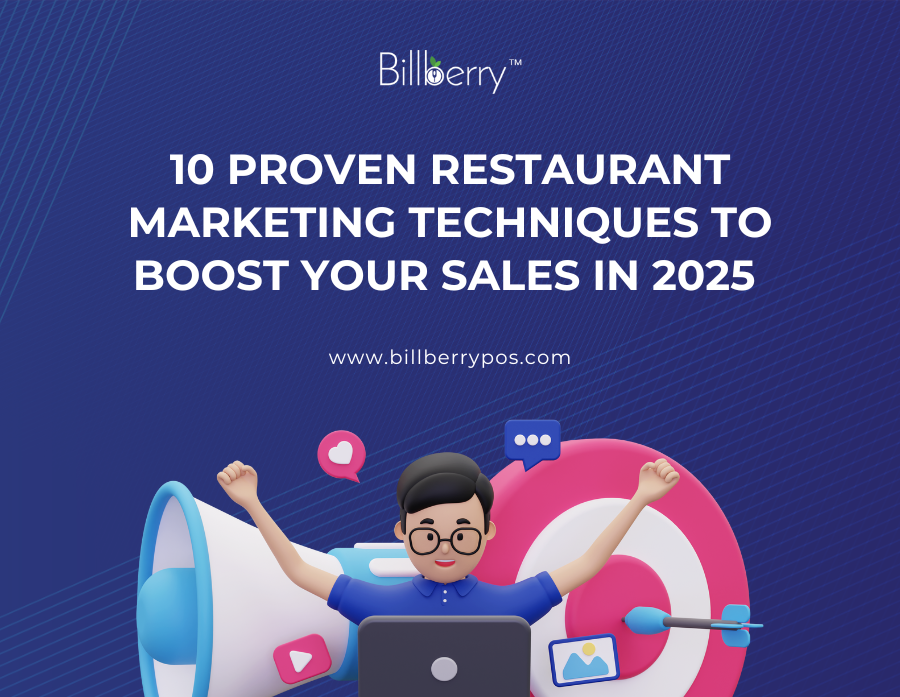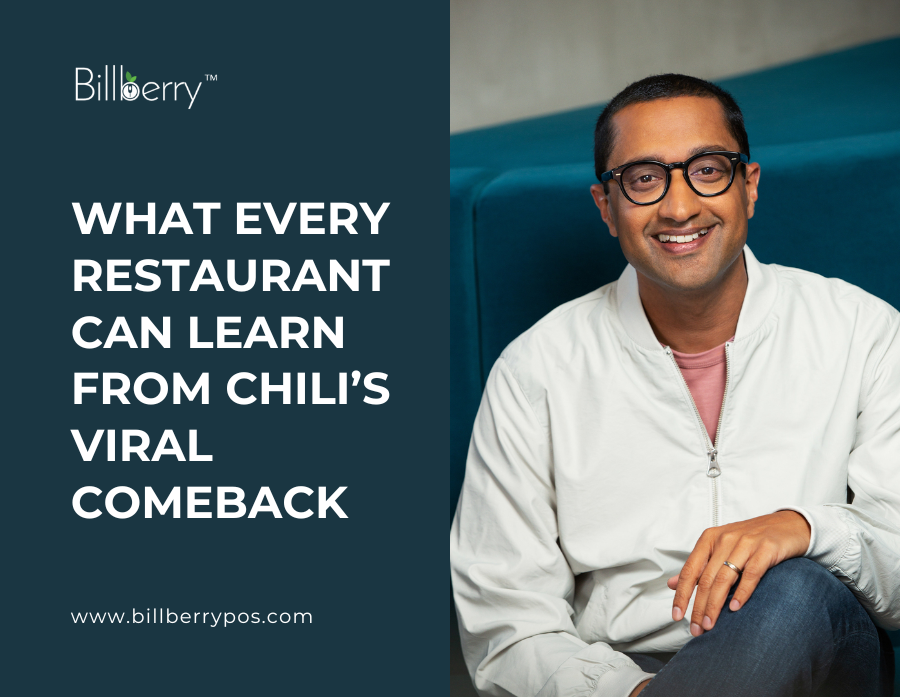In the world of food, taste brings them in once, but marketing keeps them coming back. For restaurant owners in 2026, surviving on footfall alone is no longer sustainable. With digital menus, instant delivery, and customers who scroll before they stroll, marketing has become the backbone of restaurant success. Whether you’re running a single outlet or managing a growing chain, knowing how to promote your brand is just as important as what’s on your menu. Let’s check out some restaurant marketing techniques!
Why Marketing is Non-Negotiable for Restaurant Success
Gone are the days when good food and word of mouth were enough. Today’s diners expect convenience, engagement, and experiences, all before even stepping into your restaurant. If your brand isn’t visible on Google, Instagram, or delivery platforms, you’re invisible to your next customer.
A strong marketing plan helps you:
~ Drive more orders (online and offline)
~ Build a loyal customer base
~ Stay ahead of competition (and algorithm changes)
~ Turn casual diners into regulars
What Makes 2026 Different?
The way people discover and choose where to eat has changed dramatically. Here’s what’s shaping restaurant marketing in 2026:
~ Tech shifts: AI is influencing everything from personalized offers to automated replies. POS systems and analytics tools are smarter and easier to use.
~ Delivery-first behavior: With Swiggy, Zomato, and ONDC growing rapidly, customers often experience your brand before they taste your food.
~ Short-form content dominance: Reels, Stories, and WhatsApp statuses are now key brand touchpoints.
~ Data-backed decisions: No more guesswork, restaurants that track customer behavior through digital tools are seeing higher ROI on every rupee spent.
In this blog, we’ll explore 10 powerful marketing techniques that are actually working for restaurants in 2026, with tips to help you implement them without needing an agency or a massive budget.
Let’s dive in.
Optimize Your Google Business Profile
When someone searches “best biryani near me,” Google decides whether your restaurant shows up, and your Google Business Profile (GBP) is what makes or breaks that decision.
Why Local SEO for restaurants Matters?
Local SEO is the new footfall. A well-optimized Google Business Profile helps you:
~ Appear in the top 3 “map pack” listings
~ Show updated info like hours, menu, and delivery options
~ Collect reviews that influence new customers instantly
How to Improve It:
~ Use keywords in your business description (e.g., “pure veg restaurant in Ahmedabad”)
~ Post updates weekly, show specials, events, or even Reels
~ Collect reviews through QR codes placed on tables or bill folders
~ Respond to every review, especially the bad ones, it shows you’re active and care
Pro Tip: Add high-quality food and ambience photos regularly. Google rewards engagement.
Use Instagram Reels and Stories
In 2025, if it’s not on Reels, it didn’t happen.
Instagram is no longer just a pretty feed, it’s your 24/7 branding engine. Stories and Reels give you direct access to your audience’s attention daily.
What to Post:
~ Behind-the-scenes: Chef plating dishes, staff prepping for service, morning chai moments
~ Trending audio + food visuals: Match delicious shots with trending sounds for higher reach
~ Customer reactions: Capture bite moments, birthday celebrations, or genuine testimonials
~ Quick recipes or “1-minute prep” reels: Perform great with foodies and home cooks
Keep it authentic. Don’t aim for perfection, aim for emotion and relatability.
Collaborate with Food Influencers
Influencers are today’s food critics, but way more relatable.
Whether you’re in a metro or a Tier-2 town, there are creators with loyal audiences looking for new food experiences.
Micro vs Macro:
~ Micro influencers (5k–50k followers) are hyperlocal and cost-effective
~ Macro influencers (100k+) offer broader reach but need a bigger budget
How to Partner the Right Way:
~ Offer them a custom experience: a tasting menu, behind-the-scenes tour, or meet-the-chef
~ Discuss expectations beforehand: Will they post a Reel? Story? Review?
~ Encourage authentic content, not scripted ads
Bonus: Track results using promo codes or dedicated booking links.
Loyalty Programs That Actually Work
A full restaurant is great, but a restaurant full of returning customers is even better.
That’s where loyalty programs come in. But in 2026, the paper punch cards are gone. What works now are tech-enabled rewards tied to real customer behavior.
Tech-Enabled Loyalty Ideas:
~ Offer cashback or points on every order via your POS or app
~ Send milestone rewards (e.g. “5th visit = free dessert”)
~ Use QR codes on tables or bills for customers to check points instantly
Why Data is Gold:
~ Track who your repeat customers are
~ See what they order, when they visit, and what rewards convert them
~ Use this data to personalize offers that feel thoughtful, not spammy
Tools like Billberry POS, offer in-built loyalty features that integrate seamlessly with billing and delivery.
Run Geo-Targeted Ads
If your restaurant is in Bandra, there’s no point showing ads to people in Borivali.
Geo-targeted ads let you speak directly to hungry customers nearby, whether on Google, Instagram, or Facebook, at the exact moment they’re looking for food.
Google & Meta Ads Tips:
~ Use location-based keywords like “late-night Chinese near Ghatkopar”
~ Add a call extension so customers can tap-to-call directly
~ For Meta (Instagram/Facebook), use “Get Directions” or “Order Now” CTAs
Budgeting Smartly:
~ Set radius targeting: 3–5 km around your outlet
~ Run ads during peak times (lunch/dinner hours)
~ Start small (₹200–₹500/day) and scale based on what performs
Bonus Tip: Use eye-catching creatives with your best dishes + social proof (“Rated 4.8 stars by 300+ foodies”).
SMS & WhatsApp Promotions
Even in the era of Reels and AI, nothing beats a well-timed SMS or WhatsApp message.
The open rates? Still unbeatable.
The conversion rate? Even better when paired with offers.
What to Send:
~ Flash deals: “20% off today only!”
~ Event invites: “Live music this Friday at our rooftop”
~ Personal messages: “Hi Raj, your favorite pizza is back!”
Compliance & Best Practices:
~ Always get opt-in consent (via QR forms or during billing)
~ Send messages at the right time (avoid early morning or late night)
~ Use templates with personalization tags (Name, Favorite Dish, Last Visit)
~ You can use platforms like Wati, Textlocal, or POS-integrated tools like Billberry CRM to automate this.
Optimize for Swiggy & Zomato

When customers are scrolling through endless options on Swiggy and Zomato, you want your restaurant to stand out and rank higher, not hide at the bottom.
Optimizing your delivery platform presence is one of the most overlooked restaurant marketing techniques in 2025.
How to Rank Higher:
~ Maintain accurate menus, timings, and photos
~ Use popular keywords in your item names (e.g., “Butter Garlic Naan – Most Ordered”)
~ Ensure quick response times to avoid penalties
~ Encourage happy customers to rate you within the app
Use Discounts Strategically:
~ Offer limited-time deals on low-traffic days
~ Use combo offers to increase average order value
~ Track which discounts convert, and avoid over-discounting
Tip: A well-optimized Zomato/Swiggy listing is free organic marketing, treat it like a second storefront.
Read: The Journey Of Swiggy and Zomato
Host In-House Events & Experiences
People don’t just go out to eat, they go out for experiences.
One of the most powerful restaurant marketing techniques that builds both loyalty and buzz is hosting engaging in-house events that make people want to return and tell their friends.
What You Can Host:
~ Live music nights to attract weekend footfall
~ Open mic events that turn your space into a cultural hub
~ Chef’s Table nights where guests experience curated tasting menus
How to Market Them:
~ Create countdown posts on Instagram Stories
~ Promote via WhatsApp broadcast lists
~ Partner with local event pages or influencers to spread the word
Bonus: Capture content during these events to reuse in Reels and ads.
Monitor & Adjust with Analytics
Even the best restaurant marketing techniques fail if you’re not tracking what works. Guesswork is out, data-backed decision-making is in.
Whether it’s understanding your most profitable menu item or the best day to run offers, analytics turn insights into action.
Key KPIs to Track:
~ Daily sales and footfall
~ Repeat customer rate
~ Cost per order (especially from online platforms)
~ Offer redemption rates
Tools That Help:
~ Petpooja’s Analytics Dashboard
~ Billberry POS Insights
~ Google My Business metrics (calls, directions, views)
~ Instagram & Meta ad manager insights
~ Use these tools weekly to refine your campaigns, adjust offers, and double down on what’s working.
Powered Growth Starts with the Right Tools
Great restaurant marketing techniques will bring people to your door, but what happens after that determines whether they’ll come back. That’s where Billberry POS becomes your growth partner, not just your billing software.
From collecting customer data for personalized loyalty rewards to tracking sales trends, managing inventory, and automating promotions on WhatsApp or SMS, Billberry is built to help you market smarter, serve faster, and grow consistently.
Why Restaurants Choose Billberry?
✅ Built for the food industry — Whether you’re a QSR, cloud kitchen, or fine dining outlet
✅ Integrated loyalty & CRM — Run targeted campaigns and retain customers
✅ Delivery-friendly — Works seamlessly with Swiggy/Zomato workflows
✅ Data-rich reports — Make every marketing move based on real-time numbers
✅ Multi-outlet ready — Designed to scale with your brand
Promotions Made Easy:
~ Launch geo-targeted offers right from your dashboard
~ Send personalized SMS/WhatsApp campaigns
~ Track which promo codes and ads actually bring footfall
Ready to Grow Your Restaurant in 2026?
Marketing doesn’t stop at likes and clicks, it continues at the billing counter, in the kitchen, and through every repeat order.
Billberry POS ties it all together so your entire business runs like your first outlet, efficient, data-driven, and customer-first.
Book your FREE DEMO today and get a custom strategy for your restaurant!










